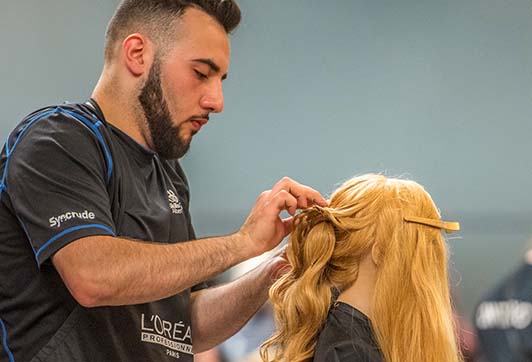Fashion Technology
What is fashion technology?
The skills required to work in the clothing and textile industry can lead to various careers in the fashion sector, which also encompasses apparel production, manufacturing, management, marketing and sales. Apparel production is a very exacting profession that requires a great deal of creativity. It involves measuring, tracing, cutting, sewing, fitting, adjusting and finishing. These steps are taken according to the specifications provided. Dressmakers can also create their own designs and sketch patterns for garments that are tailor-made for specific clients or sold off the rack in retail stores.
Computers have transformed the clothing design/production industry. Compared to traditional methods, computer-aided design (CAD) is generally quicker and more precise. It makes it easier for designers to create variations of the same pattern. Knowledge of fashion marketing principles helps designers to market their creations.
Typical duties of a fashion worker include:
- Designing the look and feel of garments
- Measuring and cutting garments to appropriate size and lengths
- Cutting, sewing and fitting garments to clients and adjusting and tailoring to suit the needs to the purchaser
- Work with computers and CAD to ensure precision and feel or clothing.
- Follow instructions when creating garments.
- Fashion designers design and create clothing and accessories for men, women and children
HOW TO JOIN THE FIELD
Completion of a college or art school program in theatre design, clothing design or exhibit design is required or A university degree in fine arts or visual arts with specialization in theatre design, clothing design or exhibit design
Creative ability, as demonstrated by a portfolio of work, is required.
Use of computer-aided design (CAD) software may be required.
INDIGENOUS AND REMOTE CONSIDERATIONS
Indigenous peoples have historically been master designers and garment creators. In the past, it has been mainly done by women who sew clothing for their families. However, in more recent years many women have been going into business with their fashion lines and selling products to locals and external market.
This is mainly done on a small business scale and most communities do not have factories where large scale manufacturing can take place. Victoria’s Arctic Fashion, Ookpik Designs would be some of the bigger names who are producing on a larger scale.
There will be shipping costs if customers are outside of home community.
An additional consideration would be some people remote and Indigenous communities may not have access to computers and may not have high levels of computer literacy. This is changing and the younger generations may be more adept than their Elders.
DISABILITY CONSIDERATIONS
When learning it may require taking things apart and doing it again. People who are highly experienced designers, when making something new, may need to learn by trial and error and this can be frustrating and time-consuming. Someone with high anxiety may struggle in this field yet put in the accommodations necessary to manage this.
Find the right career path for you with our interactive map!
Trouvez le cheminement de carrière qui vous convient grâce à notre carte interactive!
Sample Job Titles
- Buyer
- Pattern designer
- Costume designer
Companies and Sectors
- Manufacturing and service
- Retail stores
- Specialty shops
- Department stores

Fashion Technology and the Skills for Success Program
The key Skills for Success for this career path are:
- Reading
- Adaptability
- Creativity & Innovation



